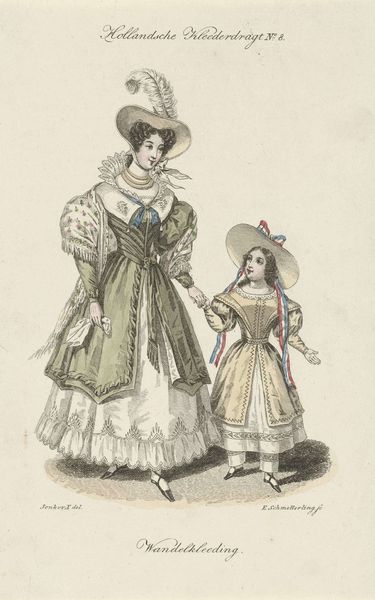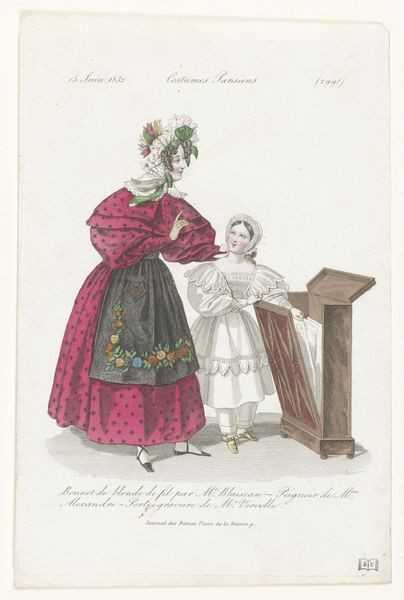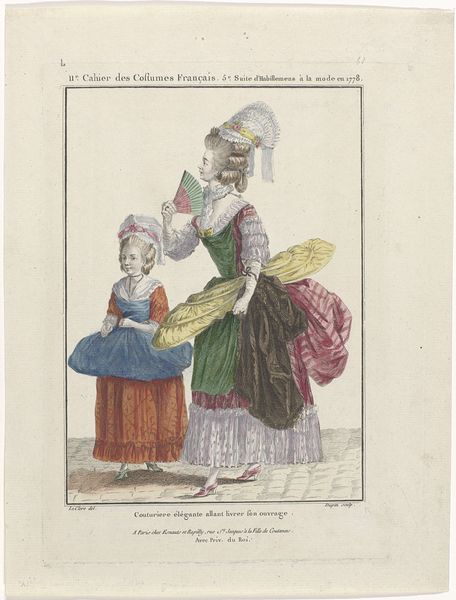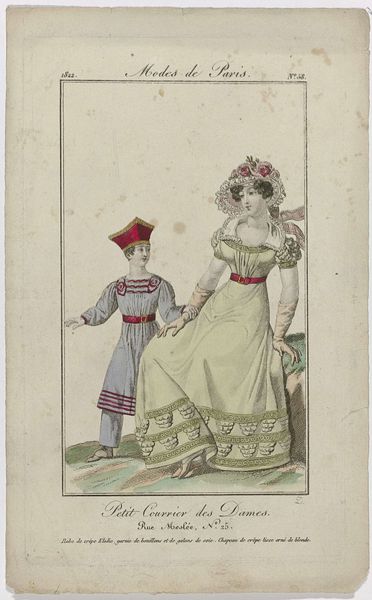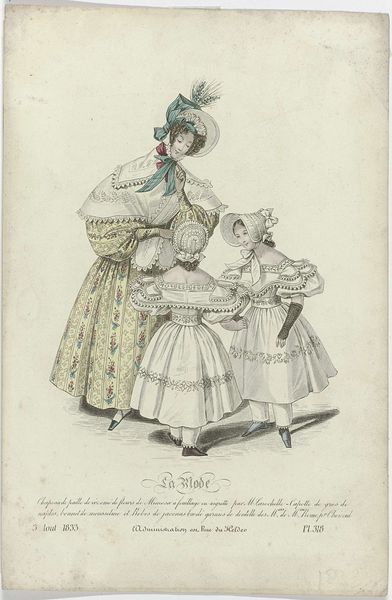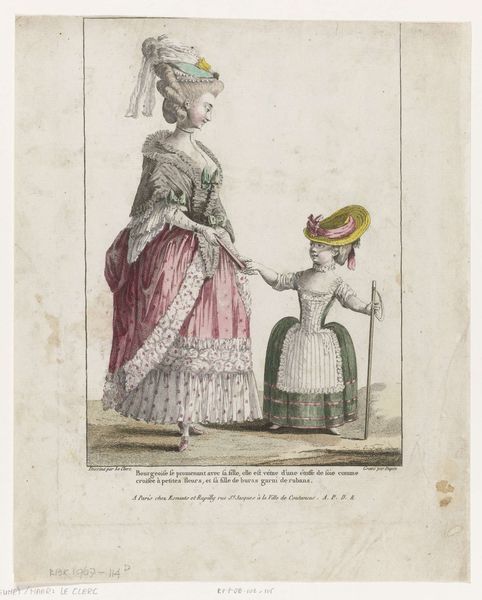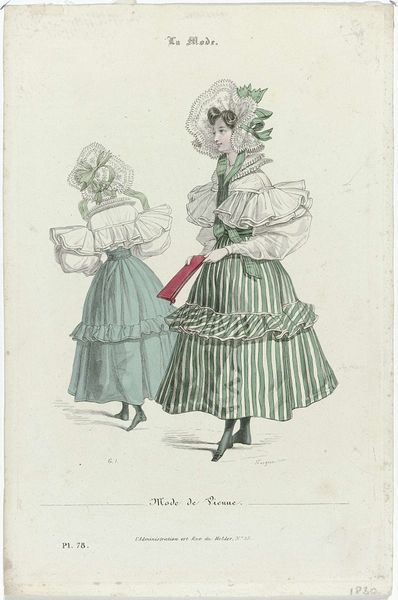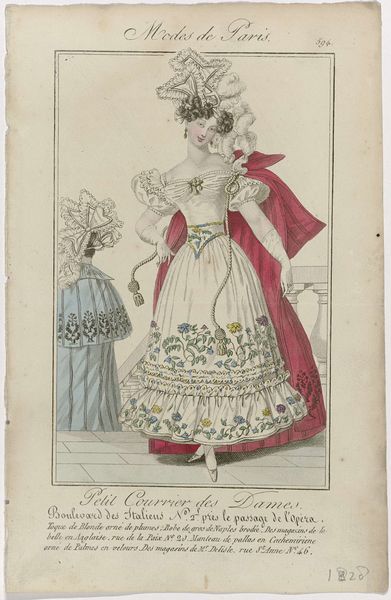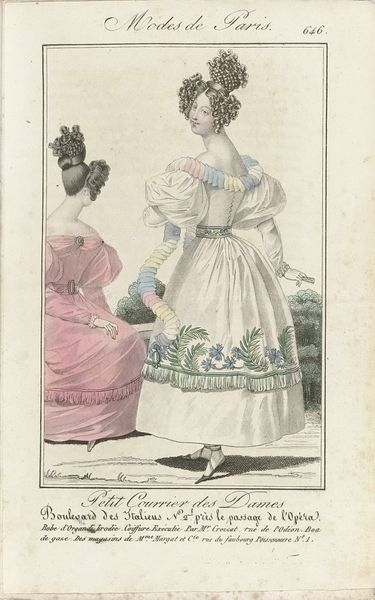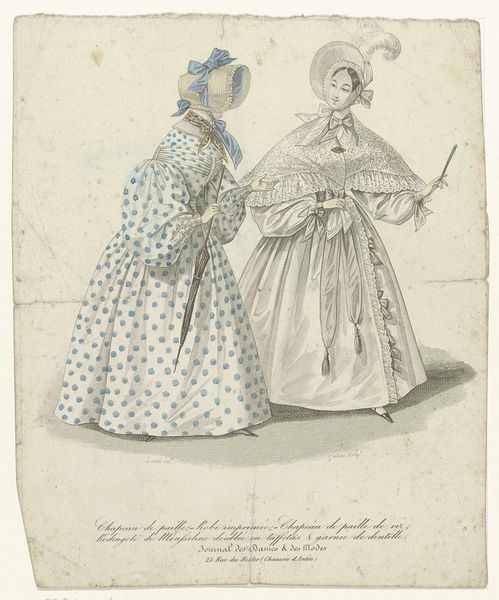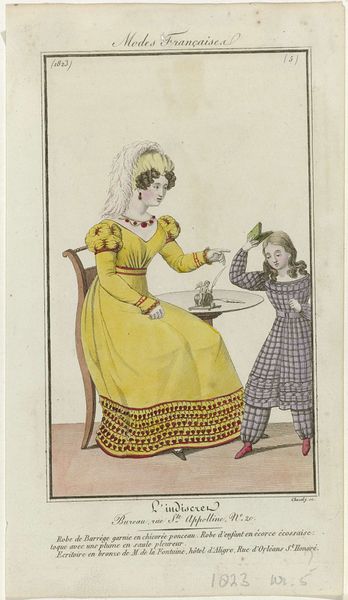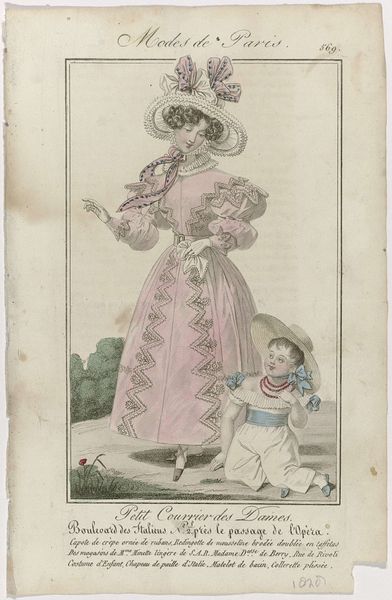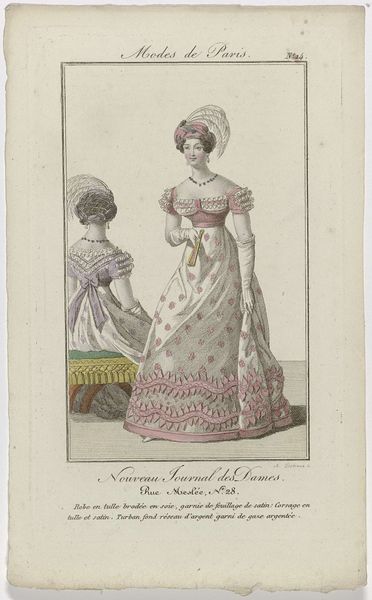
Journal des Dames et des Modes, Costumes Parisiens, 25 septembre 1831, (2922): Bonnet de blond (...) 1831
0:00
0:00
drawing, print
#
portrait
#
drawing
# print
#
romanticism
#
genre-painting
#
dress
Dimensions: height 217 mm, width 142 mm
Copyright: Rijks Museum: Open Domain
This fashion plate, made by Auguste Delvaux in 1831, showcases clothing of the era. The printmaking process itself deserves attention. It's an engraving, meaning the image was incised into a metal plate, inked, and then pressed onto paper, allowing for mass production and distribution of style trends. The depicted garments, made from materials like blond lace and organdy, exemplify the period’s emphasis on elaborate detailing and fine fabrics. The puffed sleeves and embellished bonnet signal the amount of labor and resources poured into creating fashionable attire. Such garments were not just about aesthetics; they reflected social status and the dynamics of the textile industry. The layers of lace and trimmings involved a multitude of skilled workers, from spinners and weavers to seamstresses. The print serves as a reminder of the complex social and economic networks underlying even the most seemingly frivolous aspects of material culture.
Comments
No comments
Be the first to comment and join the conversation on the ultimate creative platform.
